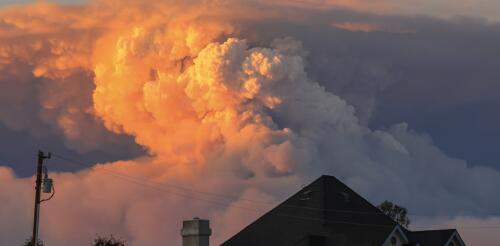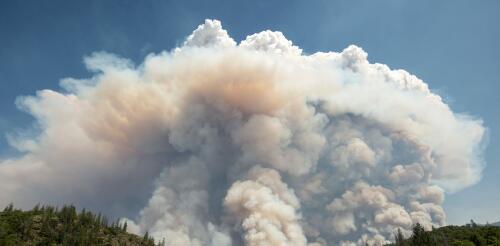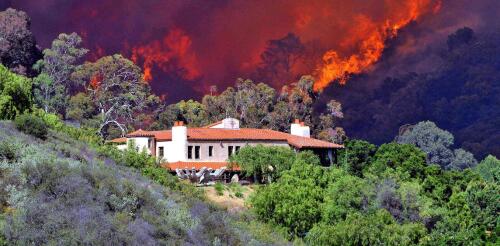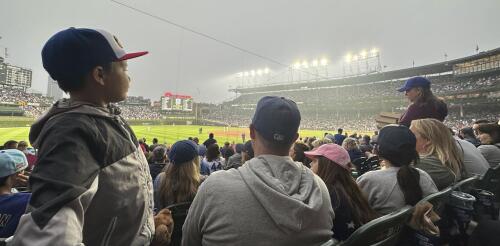Fire
Wildfire blowups, fire whirls, towering thunderstorms: When fires get large and hot enough, they can actually create their own weather. In these extreme fire situations, firefighters’ ordinary methods to directly control the fire don’t work, and wildfires burn out of control. Firefighters have seen many of these risks in the enormous Park Fire burning near Chico, California, and other wildfires in summer 2024. But how can a fire create weather? Satellite images show how the Park Fire near Chico, Calif., created intense pyrocumulonimbus plumes, visible in white, in July 2024. CSU/CIRA and NOAA I’m an atmospheric scientist who uses data collected by satellites in weather prediction models to better anticipate extreme fire weather phenomena. Satellite data shows fire-produced thunderstorms are much more common than anyone realized just a few years ago. Here’s what’s happ...
Wildfire blowups, fire whirls, towering thunderstorms: When fires get large and hot enough, they can actually create their own weather. In these extreme fire situations, firefighters’ ordinary methods to directly control the fire don’t work, and wildfires burn out of control. But how can a fire create weather? Satellite images show how the Park Fire near Chico, Calif., created intense pyrocumulonimbus plumes, visible in white, in July 2024. CSU/CIRA and NOAA I’m an atmospheric scientist who uses data collected by satellites in weather prediction models to better anticipate extreme fire weather phenomena. Satellite data shows fire-produced thunderstorms are much more common than anyone realized just a few years ago. Here’s what’s happening. The wildfire and weather connections Imagine a wildland landscape with dry grasses, brush and trees. A spark lands, perhaps from...
Rechargeable batteries are great for storing energy and powering electronics from smartphones to electric vehicles. In cold environments, however, they can be more difficult to charge and may even catch on fire. I’m a mechanical engineering professor who’s been interested in batteries since college. I now lead a battery research group at Drexel University. In just this past decade, I have watched the price of lithium-ion batteries drop as the production market has grown much larger. Future projections predict the market could reach thousands of GWh per year by 2030, a significant increase. But, lithium-ion batteries aren’t perfect – this rise comes with risks, such as their tendency to slow down during cold weather and even catch on fire. Behind the Li-ion battery The electrochemical energy storage within batteries works by storing electricity in the form of ions. Ions are atoms that have a nonzero charge because they have either too many or not eno...
Humans have learned to fear wildfire. It can destroy communities, torch pristine forests and choke even faraway cities with toxic smoke. Wildfire is scary for good reason, and over a century of fire suppression efforts has conditioned people to expect wildland firefighters to snuff it out. But as journalist Nick Mott and I explore our new book, “This Is Wildfire: How to Protect Your Home, Yourself, and Your Community in the Age of Heat,” and in our podcast “Fireline,” this expectation and the approach to wildfire will have to change. Over time, extensive fire suppression has set the stage for the increasingly destructive wildfires we see today. The problem with fighting every fire The way the U.S. deals with wildfires today dates back to around 1910, when the Great Burn torched some 3 million acres across Washington, Idaho, Montana and British Columbia. After watching the fire’s swift and unstoppable spread, the fledgling Forest Service developed...
Smoke from more than 100 wildfires burning across Canada has been rolling into North American cities far from the flames. New York City, Denver, Chicago, Minneapolis and Detroit each made the list of the most polluted cities in the world at times in May and June 2023 because of the fires. The smoke has triggered air quality alerts in several states. We asked Chris Migliaccio, a toxicologist at the University of Montana who studies the impact of wildfire smoke on human health, about the health risks people can face when smoke blows in from distant wildfires. What’s in wildfire smoke that’s a problem? When we talk about air quality, we often talk about PM2.5. That’s particulate matter 2.5 microns or smaller – small enough that it can travel deep into the lungs. Exposure to PM2.5 from smoke or other air pollution, such as vehicle emissions, can exacerbate health conditions like asthma and reduce lung function in ways that can worsen existing respiratory pr...




